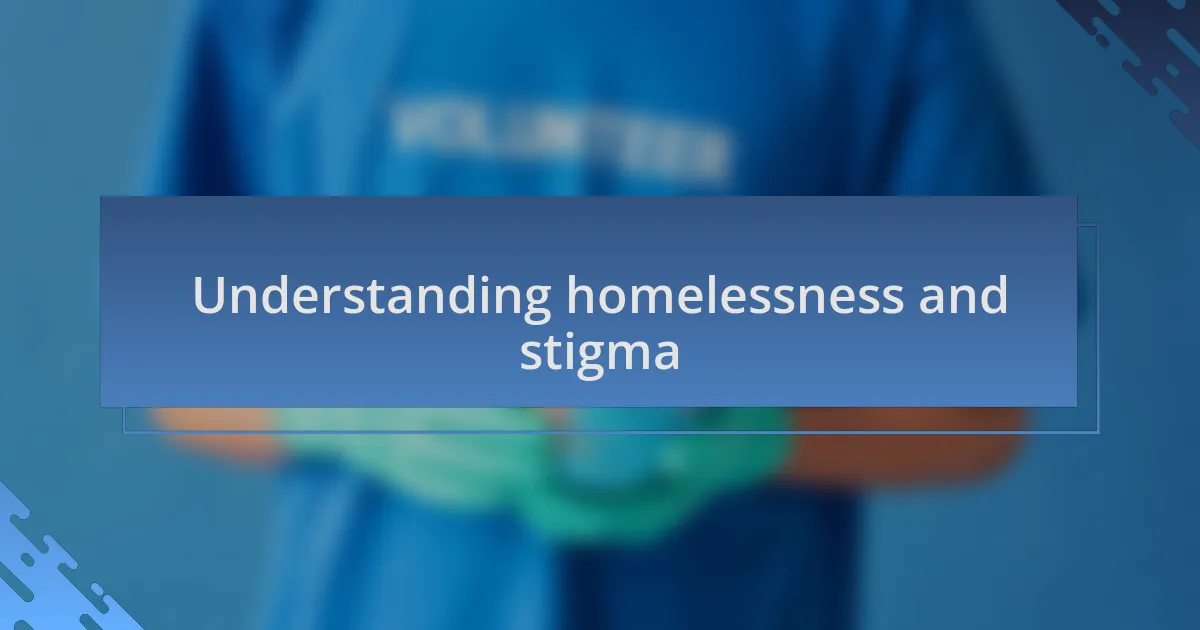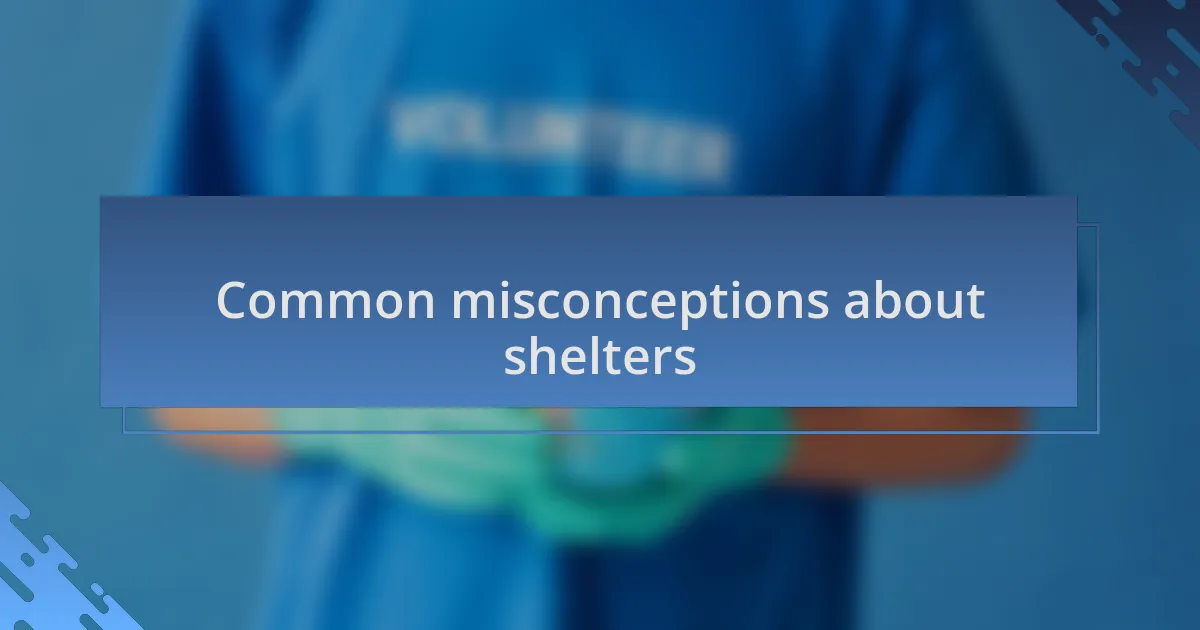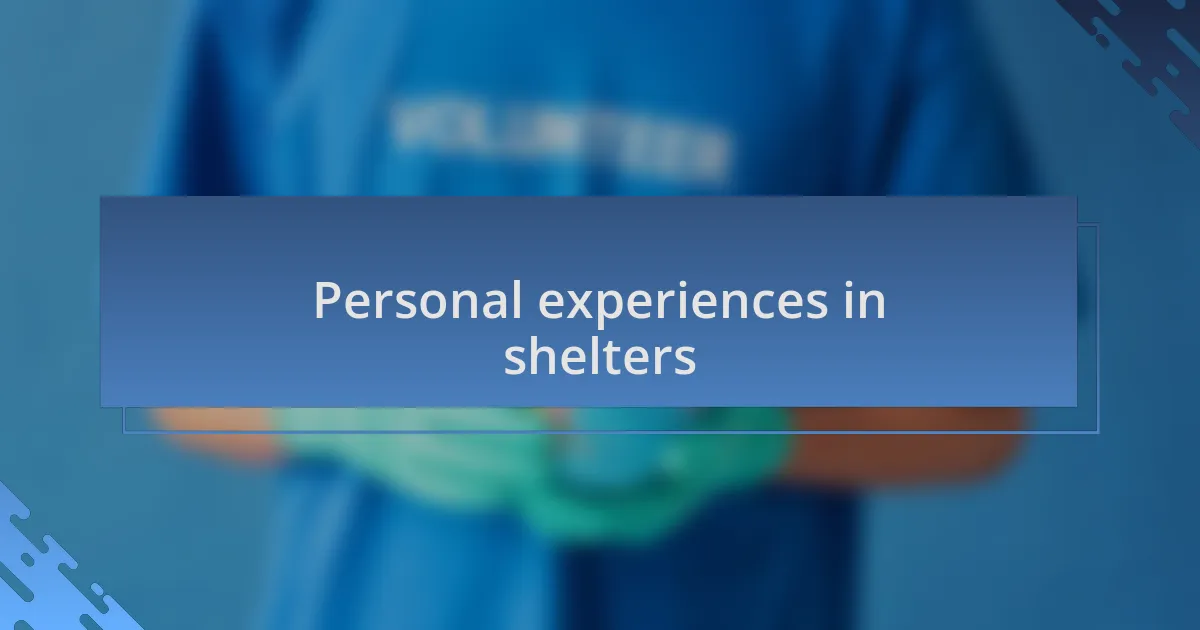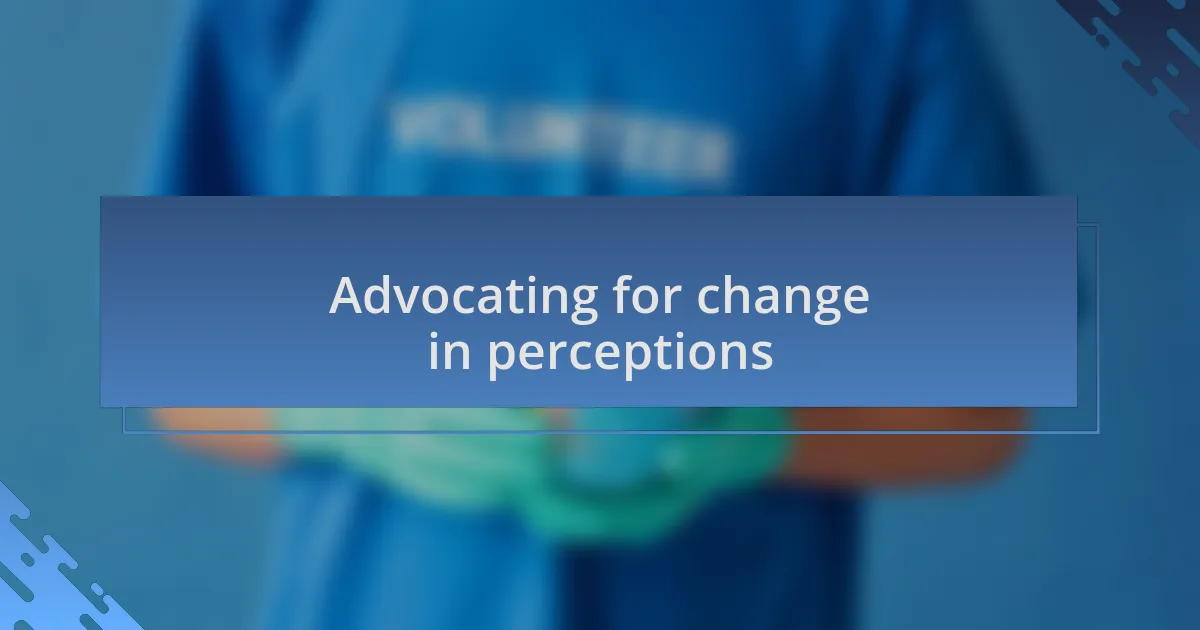Key takeaways:
- Homelessness is often accompanied by stigma and misconceptions; it is essential to understand the underlying circumstances rather than judge individuals based on stereotypes.
- Shelters provide critical support services and a sense of community, challenging the notion that seeking help is a sign of weakness.
- Building self-esteem through small goals and supportive relationships can empower individuals facing homelessness.
- Advocacy and storytelling play vital roles in reshaping public perceptions and fostering empathy toward shelter residents.

Understanding homelessness and stigma
Homelessness often comes with a heavy layer of stigma that can be difficult to shake off. I remember my first days in a shelter, feeling the weight of judgment from others, not just from society, but sometimes from myself too. It made me wonder: what stories do you carry when you pass by someone living on the street?
Many people view homelessness through a narrow lens, often associating it with negative stereotypes like laziness or addiction. However, I’ve met people with dreams, skills, and resilience that far exceed their current situation. Can you imagine how demoralizing it must be to face that uphill battle while also feeling judged for every step you take?
Breaking down this stigma requires understanding that homelessness is usually not a personal failure, but rather a complex web of circumstances. I’ve had conversations with individuals who fell into hard times due to unforeseen events, like job loss or medical emergencies. What if we moved beyond stereotypes and offered compassion instead?

Common misconceptions about shelters
Not everyone understands what shelters truly offer. I once thought of them as mere safety nets, but they serve as a lifeline filled with resources and support. Many shelters provide essential services like counseling, job training, and health care, which are often overlooked by those outside the system. Doesn’t it seem unfair that these vital services don’t get the attention they deserve?
Another misconception is that shelters are unsafe places. I vividly recall my first night in one, filled with apprehension about sharing space with strangers. Yet, I was pleasantly surprised by the sense of community and mutual support I found there. The reality is that many shelters are well-organized, monitored, and run by dedicated staff who prioritize the safety and well-being of their guests. Isn’t it interesting how fear can cloud our understanding of the reality?
Some may believe that seeking shelter is a sign of weakness. I, too, struggled with this stigma, thinking I had to tough it out on my own. However, asking for help is not a weakness; it’s a courageous step towards recovery and stability. What if we all viewed the act of seeking assistance as a testament to one’s strength rather than a failure?

Strategies to build self-esteem
Building self-esteem in the context of overcoming stigma can be a transformative journey. One strategy that worked for me was setting small, achievable goals. When I focused on accomplishing minor tasks, like attending a workshop or volunteering, I felt a sense of pride that lifted my spirits. Have you ever experienced that rush of confidence when you check something off your list? It’s invigorating!
Another effective approach is surrounding yourself with positive influences. I remember seeking out friendships in the shelter with individuals who uplifted each other. We created a little support group where we shared our goals and celebrated even the smallest victories together. It’s amazing how a supportive circle can help you recognize your own strengths, isn’t it?
Lastly, practicing self-compassion made a world of difference. I began to replace negative self-talk with affirming thoughts. Instead of dwelling on past mistakes or what others might think, I learned to recognize my worth. It’s a continual process, but isn’t it empowering to realize that the most encouraging voice we can hear is our own?

Personal experiences in shelters
During my time in shelters, I encountered a diverse array of experiences that deeply influenced my perspective. One evening, as I settled in for the night, I overheard a poignant conversation between two residents discussing their dreams and aspirations. It struck me how, despite our circumstances, we all retained a flicker of hope for the future. Have you ever realized the power of shared dreams in dark times? It can be incredibly uplifting.
I also remember a specific incident that tested my resilience. There was a day when an overwhelming sense of judgment filled the air, and I felt the weight of stigma pressing down on me. In response, I chose to share my story during a community gathering at the shelter. Opening up about my struggles turned what I initially perceived as shame into a strength, fostering connection among many who felt similarly isolated. Isn’t it remarkable how vulnerability can bridge gaps and build understanding among us?
Reflecting on my time in shelters, I can’t help but appreciate the little moments that made a profound impact. On one particularly gloomy day, I joined a group for a cooking class, and we created a simple meal together. The laughter and camaraderie we shared over chopping vegetables transformed that day into a positive memory. It reinforced the idea that even in the most challenging environments, it’s the relationships we forge that can illuminate our path forward.

Overcoming stigma through community support
Finding support within the community was a game-changer for me. I recall a weekly support group meeting where residents shared their experiences, fears, and triumphs. One evening, a fellow participant described how his friends rallied around him when he faced judgment, creating a safe space where he could recover. Don’t you think that having just a few people believe in you can shatter the walls of stigma?
I learned that acts of kindness can lead to profound shifts in perception. On one occasion, I received a handwritten note from a volunteer. It simply said, “You matter; your story matters.” That small gesture made me realize that when people come together to support each other, it not only boosts individual morale but also challenges the misconceptions surrounding shelter residents. Could such kindness be the antidote to the negativity we sometimes face?
Through my encounters, I noticed how community events promoted understanding and acceptance. At a fundraiser organized by local businesses, I was invited to speak about my journey. Sharing my story transformed my feelings of shame into empowerment, and I could see the audience actively engaged, reflecting an eagerness to learn. Isn’t amazing how storytelling can not only change lives but also reshape community attitudes? This experience underscored the vital role community support plays in overcoming stigma.

Advocating for change in perceptions
Advocating for a shift in how society perceives shelter residents is crucial in dismantling the negative stereotypes we face. During one particularly eye-opening advocacy event, I met a local journalist who took an interest in my story. As we spoke, I felt my vulnerability transform into a voice for change, and I realized that sharing our experiences could reshape narratives. Have you ever considered how a single story can alter someone’s understanding of an entire community?
I’ve also witnessed the power of public campaigns in redefining perceptions. There was a local initiative encouraging people to share their encounters with homelessness on social media. When I posted about my day-to-day struggles and triumphs, I was overwhelmed by the response. People began to engage in conversations and question their preconceived notions. Isn’t it intriguing how a simple hashtag can spark profound dialogue and empathy across a community?
I remember attending a city council meeting where residents, including myself, spoke out about the importance of inclusive policies for shelters. As I shared my experiences, I could see the expressions of the council members shift from indifference to curiosity. This moment taught me that advocacy is not solely about raising awareness but also about opening hearts. Could it be that our candid conversations hold the key to changing hearts and minds?